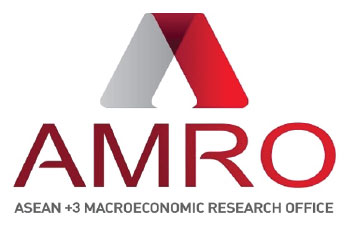
SINGAPORE, August 5, 2025 – Cambodia’s economy is projected to moderate in 2025 and 2026 following the 6.0 percent expansion in 2024, reflecting the impact of US tariffs and subdued real estate activity, despite continued strength in the services sector.
Amid escalating global trade tensions, a coordinated and multifaceted policy response, including targeted fiscal support and diversification of markets and industries, is needed to enhance economic resilience.
These conclusions are highlighted in the 2025 Annual Consultation Report on Cambodia, published today by the ASEAN+3 Macroeconomic Research Office (AMRO). The report is based on AMRO’s Annual Consultation Visit to Cambodia from April 21 to 30, 2025, incorporating data and information available up to July 16, 2025.
Economic outlook and risks
Cambodia’s economy faces increased uncertainties, mainly driven by external factors, alongside emerging challenges within the domestic financial sector. Before the April US tariff announcement, Cambodia’s economy posted strong year-on-year growth of 6.0 percent in 2024, up from 5.0 percent in 2023.
Cambodia’s growth outlook is highly sensitive to the eventual magnitude of the tariffs, consumer price elasticity, and spillover effects, given the country’s significant export exposure to the US. If the previous tariffs of 36 percent were to take effect in August 2025 as planned1, growth is expected to slow to 5.2 percent in 2025 and 4.7 percent in 2026. Under a more adverse scenario where demand proves highly elastic or US tariff exceeds the 36 percent rate, growth could fall to about 4 percent or less in both years.
Inflation has been trending downward but remains uncertain, mainly due to fluctuations in food prices. Headline consumer price index (CPI) inflation is expected to rise to 2.5 percent in 2025 due to base effects, before moderating to 2.3 percent in 2026, aligning with pre-pandemic trends. However, given uncertain inflation path and rapid pass-through from commodity prices, a surge in global commodity prices could intensify inflationary pressures.
Cambodia’s external position is expected to register to a deficit, mainly due to the widening trade deficit. In 2024, the current account balance registered a surplus of 0.5 percent of GDP, while FDI inflows remained robust at 9.2 percent of GDP2. Moving forward, the current account is projected to record a deficit of 3.5 percent of GDP in 2025 and 5.4 percent in 2026.
The fiscal deficit is projected to widen in 2025, reflecting the government’s ongoing efforts to normalize public spending following the sharp cuts in 2024. Public debt is expected to rise to 27.2 percent of GDP.
Credit growth remains at historic low, while asset quality in the banking sector is deteriorating. These trends could weaken bank profitability and capital adequacy. Continued weakness in the real estate market activity could weaken the financial positions of some real estate developers, further heightening credit risks. If left unaddressed, these financial strains could spill over into the real economy.
Policy recommendations
The government’s swift decision to reduce tariffs on US goods was a constructive first step that helped de-escalate tensions. Strengthening regional cooperation will also be key to improving bargaining power and fostering intra-regional trade. Over the medium term, export diversification and improvements in domestic competitiveness should be prioritized.
Fiscal policy should remain agile and responsive in the short term, while a balanced approach to fiscal sustainability and development goals will be essential over the medium term. The authorities should begin preparing contingency for the scenario where the final US tariffs are permanent, or trade tensions escalate further. Over the medium term, Cambodia should continue to pursue gradual fiscal consolidation. The revenue shortfalls in 2023-2024 highlight the urgency of implementing the new revenue mobilization strategy.
The NBC’s accommodative policy stance should be maintained to support the economy amid a lower growth outlook. The current regulatory forbearance measure to allow more time for banks to address non-performing loans (NPLs) should be time-bound to avoid moral hazard. At the same time, a more proactive approach should be adopted to enhance NPL management.
The authorities should safeguard financial stability by enhancing the macroprudential policy framework and establishing frameworks for the deposit insurance scheme, banking resolution, crisis management, and emergency liquidity assistance in the near term.
Effective policy implementation is key to advancing structural reforms. While the commitment to fostering high-quality, sustainable and inclusive growth is commendable, progress depends on the effective execution of existing strategies which requires stronger management and inter-ministerial coordination where priorities diverge. Additionally, strengthening data collection is critical to support evidence-based policymaking.
1On July 31, the US announced its decision to lower the reciprocal tariff on Cambodia to 19 percent, effective October 2025.
2The 2024 GDP figure is based on AMRO staff estimates.
About AMRO
The ASEAN+3 Macroeconomic Research Office (AMRO) is an international organization established to contribute toward securing macroeconomic and financial resilience and stability of the ASEAN+3 region, comprising 10 members of the Association of Southeast Asian Nations (ASEAN) and China; Hong Kong, China; Japan; and Korea. AMRO’s mandate is to conduct macroeconomic surveillance, support regional financial arrangements, and provide technical assistance to the members. In addition, AMRO also serves as a regional knowledge hub and provides support to ASEAN+3 financial cooperation.
About AMRO’s Annual Consultation Report
The Annual Consultation Report was prepared in fulfillment of AMRO’s mandate. AMRO is committed to monitoring, analyzing and reporting to its members on their macroeconomic status and financial soundness. It also helps identify relevant risks and vulnerabilities, and assists members, if requested, in the timely formulation of policy recommendations to mitigate such risks.
